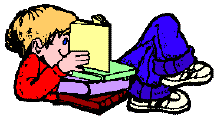 Guided Reading Mini Lessons
Guided Reading Mini Lessons

 Guided Reading Mini Lessons
Guided Reading Mini Lessons

**Still working on this!
**This comes from a website that doesn't exist anymore, but I had printed it out a long time ago.
The first part of guided reading always includes a mini lesson. Below is a list of mini lessons collected from books, other teachers, and the internet. This list is by no means conclusive. Many of the lessons in the list can and should be presented over several days. Almost all the lessons can and should be presented many times throughout the school year. It is important to keep the mini lessons brief and to the point. Short, but powerful. The mini lesson should be a reading skill you want your students to apply while reading the selection for guided reading. For example, your mini lesson might be characterization. You could model using part of the current story or another story. Using sticky notes, mark passages that reveal traits about a certain character. The children go off to read, marking passages that have information about the character.
1. What to do when you come to a word you don't know.
Look at all the letters.
Can use point and slide technique--cover letter with finger - uncover to reveal a letter at a time.
Look for patterns that you know.
Sound out the word by using beginning and ending sounds and any spelling patterns.
Produce a word that sounds like a real word you already know.
Keep your finger on the sentence and reread the sentence to cross check your possible
pronunciation with meaning.
Does it sound right?
Does it make sense?
Does it fit?
Chunk the word if it is a big word.
Look for a little word in a big word.
If it doesn't make sense, go back to the word in the sentence and try to think of a new
word that would make sense and would have those letters.

2. Procedural: Discuss format
Read in different ways with different people- sometimes with the teacher.
Preview the story, do any new vocabulary words, set a purpose, choose partners or groups.
After the teacher calls groups, quickly and quietly go to an area to read.
You must sit should to shoulder so you can see each others books.
Take turns reading.
You must keep track while your partner reads.
You cannot get up to talk to the teacher.
If you need anything, raise your hand.
The teacher will stop by and listen to the partners read.

3. Working out what words mean. Context Clues
Look at how a new word is used.
Look at the other words in the sentence.
Look at the sentences before and after the new words.
4. Reading for Different Reasons. Author's Purpose
(More than one lesson)
Non-Fiction - inform us
How-to-manuals - instruct us
Literature- pleasure, move us, amuse us, make us think
Poetry- pleasure, move us, amuse us, make us think
Newspaper and Magazines- persuade us
5. Using Reference Books. Study Skills
Reference books: use to model use of each - children use
Dictionaries- meaning, pronunciation, spelling, alphabetical order
Encyclopedia- information arranged in alphabetical order
Atlases-books of maps
Thesauruses-word lists that mean the same, some include opposites
6. Reading with expression
Look for the following:
Periods, commas, question marks, exclamation points. large print, bold print,
italicized print, quotation marks
Do the punctuation with visual acts:
Period-hold hand to stop
Exclamation point-bring fist down on other hand
Question mark- curve finger and hold by ear
Dialogue-take two fingers and hold by mouth
7. Strategies for answering open-ended questions.
Turn the question into a topic sentence, (Turn the question around.)
Use details from the story.
Staying on topic.
Answering all parts.
8. Predicting Outcomes
Use what you know about the past to guess what will happen
in the future.
Use what has happened so far in the story to make a guess.
The answer not written in the text.
Adjust or confirm your prediction.
9. How rereading helps
1. Do this to help illustrate how rereading helps. Use a web.
2. Have the students read for 2 minutes, close books.
3. Write down everything they remember.
4. Read again for 2 minutes.
5. Add to what was written the first time.
10. Finding the Main Idea-Theme
What is the story mostly about?
What is the author's message?
11. Theme
Theme is something about life that the story teaches.
Don't pick a theme that sounds good that isn't in the story.
12. Reading for facts-literal meaning-Explicit
*Right there questions. Put your finger on the answer
*Think and search questions: answer is explicit, but must look in more
than one place to find answer
Answers are right there in the text.
Find the part of the story that has the facts you need to answer the
question.
Read this part again.
13. Making Inferences
*Author and You-Questions: Assemble a reasonable answer
* On your own questions: The answer is not in the book.
Example: How would you...What do you think...
Figure them out in your head. Answers not given in story.
Use what you already know about the topic and world.
Use clues from the story.
14. Connections:
Text to self
Text to text
Text to world